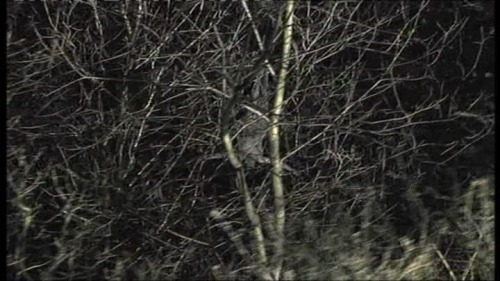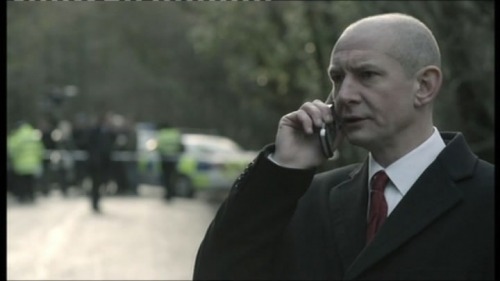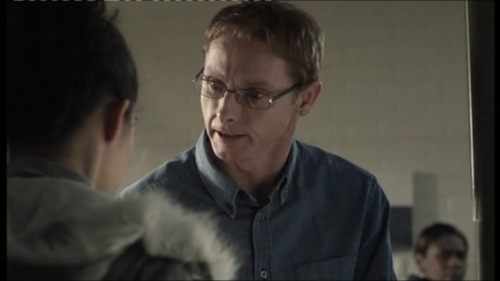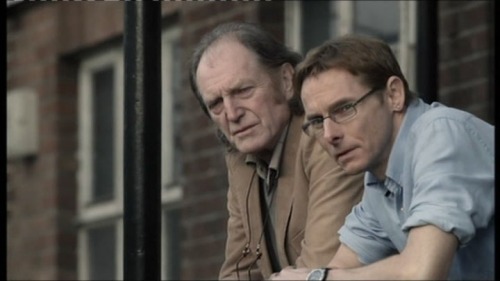|
p
Simon Lewis d
Philippa Lowthorpe w
Stephen Butchard ph
Chris Seager ed
David Thrasher m
Peter Salem art
Tom Bowyer
Jaime Winstone (Anneli Alderton), Natalie Press (Paula Clennell), Eva
Birthistle (Annette Nicholls), Aisling Loftus (Gemma Adams), Kierston
Wareing (Nina), Ruth Negga (Rochelle), Sarah Lancashire (Rosemary
Nicholls), Juliet Aubrey (Maire Alderton), Ian Hart (DCC Stewart Gull),
Lisa Millett (PC Janet Humphrey), Sean Harris (Brian Tobin), David
Bradley (Patrick Palmer), Kate Dickie (Isabella Clennell), Joseph Mawle
(Tom Stephens), Anton Lesser (Dr Nat Cary), Lauren Socha (Dawn), Vicky
McClure (Stacy Nicholls), Christopher Fairbank (DCI John Quinton), Holly
Grainger (Alice Clennell), Jo McInnes (ACC Jacqui Cheer), Chris McCalphy
(Steven Wright),
There’s always a sense of the distasteful about using contempoary
cause célèbres for
dramatic purposes. Not only does it recall a million dire
disease/murder of the week TV movies on Hallmark and its ghastly ilk, it
recalls the events themselves. Remember Warner Bros indefinitely
postponing the VHS release of
Natural Born Killers in the UK after the Dunblane massacre
or the delay in the release of
Gone Baby Gone in the UK for fear of parallels being drawn
to the
Madeleine McCann
case. Or remember how Warners had to
postpone the last episodes of
Buffy‘s third season when one of the episodes, ‘Earshot’,
was too close to the bone in light of the Columbine tragedy. Even
several years after the event, many found
United 93 an impossible
watch. So when the BBC announced that it was dramatising the events of
October to December 2006 in Suffolk, I have to admit to a deal of
uneasiness about the enterprise. I still remember Paula Clennell
speaking to Anglia TV reporters only days before her death about the
fear of getting in cars, but having to do it for the money, or Anneli
Alderton on that fateful train CCTV footage back to Ipswich and her
imminent death. I didn’t watch it immediately when it was broadcast,
and it’s perhaps unusual I am writing it now.
As I write it’s less than a week after events in the west of my home
county which even now seem to beggar belief, of the already infamous
Derrick Bird’s gun spree, of 12 victims whose lives were ripped from
them almost without them knowing it. It’s been a hard year in Cumbria,
our own house nearly went under to the rising flood waters, while
several people were killed and thousands made homeless. Perhaps,
however, conversely, it’s in such a sense of disbelief that these events
are best witnessed, for Five
Daughters, as the BBC’s drama was called, aimed to take a
different stance to the usual police dramas with their cop clichés.
Unlike say Zodiac or
its like, which focused on the investigations, or films about Jack the
Ripper, which either follow the killer or the police,
Five Daughters was most
concerned with the real tragedy at hand, the victims and those they left
behind. To people watching the daily horrors unfold in Suffolk just
before Christmas 2006, it’s too easy to just pigeonhole the victims as
chav prostitutes who, if they didn’t deserve what was coming to them,
were at least criminals and not ‘decent people’. Just faces in a
montage. Yet they were always more than that, and writer Stephen
Butchard aims to remove the girls from the purgatory of statistics,
ticked boxes for criminal profilers.
For the killer, Steven Wright, there’s nothing for him but the
periphery, the margins of the essay. The text, as it should, is about
Tania Nicol, Gemma Adams, Anneli Alderton, Paula Clennell and Annette
Nicholls. 122 years ago, when five other women were murdered in
Whitechapel, we knew virtually nothing of them. They were all
prostitutes, but doing it to survive, and to fund drinking habits.
Yet they were, with the exception of the unfortunate Mary Kelly, all in
their forties and past their prime. The oldest of Steve Wright’s
victims was 29, the youngest 19, these were young women who could have
had a future but were denied even the chance. Easy to dismiss as
prostitutes, it doesn’t effect you as much that way and, besides,
humanising them doesn’t sell papers. The gutter press, effectively
invented in 1888 as a result of Jack’s atrocities, were still around in
their tasteless hordes, circling around the homes of victims’
mothers, like parasites seeking another food source. And when the DCC
announces the finding of two bodies, the reaction of the press is not
one of shock but of speeding for the exit to get the news to their
offices in time for deadlines. Technically, it could be seen as a
cliché, and yet it’s a deserved swipe on behalf of the victims’
families. Likewise, the fact that the girls were all doing it to fund a
drugs habit is one that is highlighted, for in the end, the prostitution
is merely a means to the end of a score. Doing something to stop
prostitution and it’s like punishing someone for not mopping up a leak
spillage on the floor. Better to stop the leak, better to get the girls
off the drugs. And if the depiction of the Iceni centre and its
councillors may seem like the voicebox of the writer by proxy, we can
forgive them that, for the writer has earned the right to preach, not on
his own behalf, but on behalf of the girls left behind afterwards. The
only other possible complaint is the killer’s vehicle, cornering round
to its next victim like a hearse, with music swelling to sombre highs as
if to say “it’s him”, recalling indeed the spooky piece used to
accompany the killer’s coach in the 1988 drama about Jack with Michael
Caine.
The police aren’t ignored in the process, we got to see the always
reliable Ian Hart and his team go about their daily work. Some
criticised the depiction as mundane, and yet is that not what police
work is really about, doing the mundane things to narrow the search. If
it were not based on real events, the writer would have been accused of
the biggest deus ex machina
since Russell T.Davies’ Doctor Who finales when, just like that (one
half expected the cop to come in in Tommy Cooper’s fez), they get an
incontrafutable DNA match for the killer. Yet that’s the disturbing
thing, but for the DNA, the police were no nearer to catching Wright
than they had been to finding Peter Sutcliffe before his car was pulled
up by chance. In Jack’s day there were no forensics, no DNA, heck, not
even fingerprints. Even postmortem photography was new. Jack killed
five women inside 9 weeks, here five bodies had been found over 10 days,
the biggest manhunt since Sutcliffe, a small constabulary stretched to
breaking point. A feeling of hopelessness got over in a truly upsetting
opening sequence where, having been alerted to having found a body 20
feet from the roadside, the helicopter surveying the scene hours later
shows up another corpse only a few hundred yards away; two horrific
discoveries for the price of one.
The title is what matters here, however, these are five daughters,
though it could just as easily have been five mothers, sisters or
friends. The last three victims knew the dangers, but addiction cannot
be just put into a corner. Tell an alcoholic another drink will kill
him, most of the time he won’t stop. These girls needed the money, some
for heroin, others just to pay off debts of pimps wanting their vile
cut. We are shown four of the girls in total (one, Tania Nicol, is
never seen), and all are fully rounded characters, perhaps stereotypes
in some ways, but flesh, blood and very much alive. This drama tells
the story of not just how they were killed, but rather why they were
taking the risks in the first place. One had been released from prison
and seemed to be going straight, until the news of the death of her
friend sends her spiralling back into her hardcase, smackhead shell.
Another is struggling to keep up payments to her pimp and is about to be
evicted from her home. Her only solace is a notebook of musings and
poems she spills out her soul onto. Then there’s one living in an
abandoned flat with another prostitute, having lost her three children
to care and continuing to take heroin simply to forget the pain she’s
caused.
By the end of the piece, one is left numb. There may be an uplifting
final caption, telling of how street prostitution has been all but wiped
out in Ipswich and how Rochelle and Nina have turned the corner, got off
drugs and started new lives. There may even be hope that by telling
their stories it may prevent others following suit, and the likes of
Cathy Come Home and
Hillsborough have both shown the power of television drama
to make a difference to public perception. Yet that doesn’t make it any
less numb. The shots of parents expecting the worst but finally
breaking down when it becomes fact – the next time someone tells you to
prepare for the worst, they may as well ask you to jump the moon because
you cannot prepare for
that moment when all hope is lost. One especially recalls the moment
when Aubrey identifies her daughter in the mortuary chapel and breaks
down and Lancashire’s numbed shock, just wanting to see her daughter’s
body but prevented from doing so by police procedure of preserving the
crime scene in situ. “She’ll be
cold“, she protests, and our hearts sink.
It would be easy to praise the performances of the cast, and doubtless
they’d feel uncomfortable receiving any praise in the circumstances, but
beyond the obvious surface dramatics, there’s a purpose to their work,
to portray the plight of these girls and their families and support
workers, as not merely names in print. This they all to faultlessly,
from first to last. As a triptych of victims’ mothers, Sarah
Lancashire, Juliet Aubrey and Kate Dickie are astonishing, while there
is also superb work from David Bradley and, especially, the
ever-blistering Sean Harris as a kindly but exasperated drugs’
councillor (complete with an accent which was praised for its
authenticity at a time when many portrayed those from Easy Anglia as if
they came from the west country). His casting and that of Joseph Mawle
as a suspect recalling earlier portrayals of monsters, of Harris’ Ian
Brady, of Mawle’s one-scene Sutcliffe in
Red Riding. And then
there’s the girls, with Loftus haunting in her few scenes as Gemma, the
first to be found, Wareing, Negga and Socha (remember her as the
disaffected teen in The Unloved?)
as the ones lucky enough to escape, Press as raw as an exposed nerve as
Paula, Winstone (Ray’s daughter) never better than as Anneli, literally
transforming from a considerate girl into a brash, loud monster, simply
by dying her hair and adopting a persona as apposite as could be
imagined. If one remembers anyone, though, for me it’s Birthistle as
Annette, her poems (or rather those Butchard put into her mouth, for her
family wouldn’t let the writer see her real notebook) providing the
dimming heartbeat of their soon to flat-line existence.
“I’m not a bad person. I’m not a
waste of time, space or oxygen. I deserve the air I breathe.”
|








